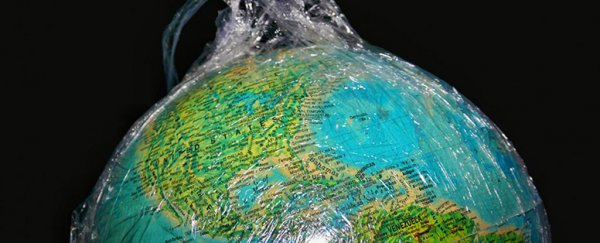For the first time, scientists have calculated an estimate of the combined mass of the 'technosphere' – a concept that defines all the human-made things on the planet. All your stuff, basically, and everybody else's too.
The technosphere therefore includes all human structures such as buildings, roads, and bridges, but also smaller items, such as technology, clothing, and books.
Not to mention landfill – all of our human-made garbage and debris is part of it, as are the things in the natural environment that we've altered to keep ourselves alive, like farms for food, or mines for energy.
So what's the combined mass of all that? According to a team of more than 20 scientists led by the University of Leicester in the UK, we're talking about something in the order of 30 trillion tonnes.
Yes, that's a lot, but nobody ever thought the "summed material output of the contemporary human enterprise" was going to be lightweight, did they?
The researchers based their estimates on figures from numerous studies analysing the physical environment, including topological, subterranean, and marine data.
While they acknowledge that their 30 trillion tonnes estimate is a highly preliminary approximation, of perhaps greater importance than the exact figure is what the ramifications of such a pervasive technosphere could mean for the planet.
Case in point: if 30 trillion tonnes is accurate, that means the technosphere's divided mass across Earth's surface amounts to more than 50 kilograms (110 pounds) for every square metre – another approximation, but one which helps us to picture how huge this overall phenomenon could be.
"There is more to the technosphere than just its mass," says one of the researchers, Colin Waters.
"It has enabled the production of an enormous array of material objects, from simple tools and coins, to ballpoint pens, books and CDs, to the most sophisticated computers and smartphones," he adds.
"Many of these, if entombed in strata, can be preserved into the distant geological future as 'technofossils' that will help characterise and date the Anthropocene."
In that sense, the technosphere is related to the Anthropocene – the new geological epoch we now live in, according to many scientists – but is also separate from it.
As some have pointed out, the Anthropocene – like the Holocene before it – describes an epoch in time determined by geological evidence.
By contrast, the technosphere is a new kind of hypothetical system, first introduced in a 2014 paper by geologist and environmental engineer Peter Haff from Duke University – who also worked on this new study.
According to the researchers, this massive sphere of human influence is made possible by our sophisticated social skills and advanced use of tools, which differentiates it from other biological systems.
Not that it's necessarily a good thing for the planet, mind you.
"The technosphere can be said to have budded off the biosphere and arguably is now at least partly parasitic on it," says researcher Mark Williams.
"Compared with the biosphere, though, it is remarkably poor at recycling its own materials, as our burgeoning landfill sites show. This might be a barrier to its further success – or halt it altogether."
While the whole concept of the technosphere is likely to remain a topic of some debate among scientists, what's not in doubt is that humans are having a massive impact on the environment.
And if the technosphere hypothesis can help researchers to explore and explain the consequences of that process, it's a valid part of the scientific discussion.
Even if it is a little crazy.
